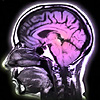A six-year study of a special type of brain aneurysm -- the thrombotic aneurysm -- has led to a treatment "roadmap" that should mean better outcomes for patients with this unusual medical problem.
UCSF Medical Center neurosurgeon
Michael Lawton, MD, headed the clinical research team. The findings were reported in the March 2005 issue of Neurosurgery.
About 5 percent of the US population develops a brain aneurysm at some time, and an even smaller percentage -- about 0.5 percent -- is diagnosed with a thrombotic aneurysm. An aneurysm is an outpouching or bulge in an artery that usually forms at a branch point. The bulge represents a weakened spot in the arterial wall, and without treatment there is a risk of hemorrhage leading to brain damage or death. A thrombotic aneurysm is unusual because it contains a blood clot.
In surgical treatment for a brain aneurysm, tiny metal clips, something like tiny clothespins, are typically used to separate the aneurysm from the normal vessel. The clips keep blood from entering the aneurysm, and as a result future bleeding is prevented and nearby brain tissue is protected. A solid clot inside the aneurysm makes it difficult for the blades of the clip to squeeze the aneurysm and make the separation from the normal vessel.
In an attempt to develop better ways to treat patients with thrombotic aneurysms, the research team studied 68 patients with the disorder. The researchers developed a classification system of six different types of thrombotic aneurysms and the best way to treat each type.
At UCSF Medical Center, surgeons perform more than 400 brain aneurysm procedures a year, and while all are not thrombotic, when this type does arise it presents particular challenges to a neurosurgeon, according to Lawton.
"When confronted with a thrombotic aneurysm, the neurosurgeon's instinct to clip collides with the solid mass of the aneurysm forcing him or her to trap the aneurysm between temporary clips...," the researchers write in the journal article.
The next steps are to open the aneurysm wall, remove the blood clot from inside the aneurysm, and then reconstruct the neck of the aneurysm with clips. "This technique is stressful and the outcome unpredictable," they add, and can be associated with prolonged interruption of blood flow to the brain (known as ischemia), failed reconstructions, and poor results.
The study sought to address this with a classification system, giving the neurosurgeons more information on how to proceed with these challenging cases, Lawton said.
"There is little time to waste when a patient presents with an aneurysm," Lawton said. "The classification scheme may provide important preoperative guidance to neurosurgeons, increasing the chances of preserving the patient's life and function."
Lawton likened the classification to a driver having a roadmap. "It puts the surgeon a couple of steps further ahead," he said.
Source: Carol Hyman
Related Links
Full press release

